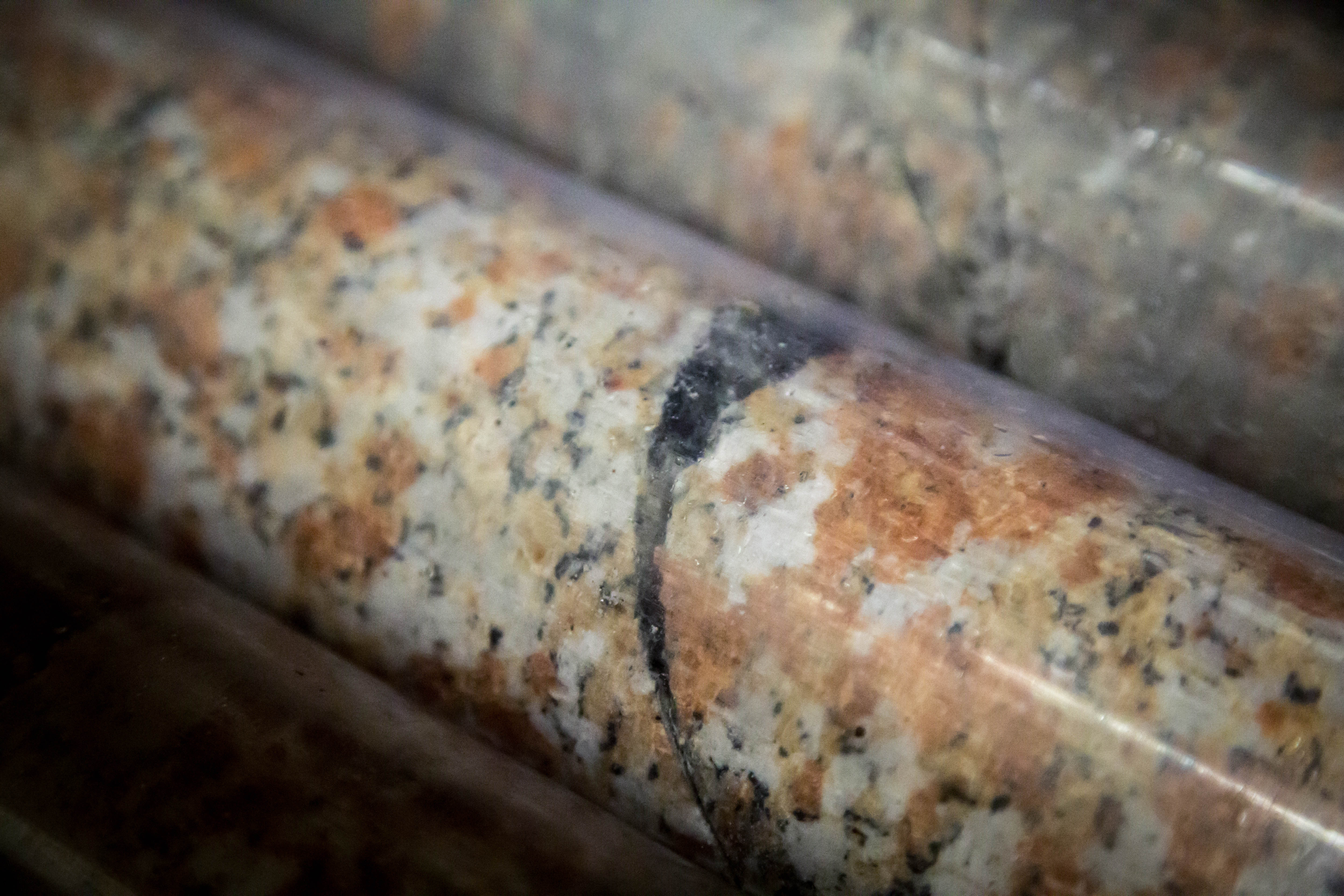Compared to the pockmarked appearance of Earth’s lone satellite, our planet has had it relatively easy when it comes to giant space objects smashing into it. But once in a while our luck runs out.
Such is the case with the Chicxulub crater in the Yucatan Peninsula. The meteor that caused the crater is widely believed to have led to the extinction of nonavian dinosaurs as well as most of the rest of life on earth. And a new study is expected to shed even more
light on this devastating event.
Earlier this year an expedition obtained 830 m (2,725 ft) of core from the “peak ring” of the crater. The core was sent to Weatherford Laboratories in June for computed tomography (CT) scanning. The cores also were logged while still on the drillship. Later they will be shipped to Bremen, Germany, where they’ll be slabbed and analyzed by a team of more than 30 scientists.
Why? According to Sean Gulick, a professor at the University of Texas and one of the chief scientists on the project, there are three primary goals. One is understanding how large impact craters work. These craters are rare on Earth, and the Chicxulub crater is the best preserved. “By drilling a very diagnostic landform called a peak ring that lies buried in the center of the crater, we hope to be able to figure out the processes that take place during an enormous impact,” Gulick said.
Secondly, of course, is the extinction event. Theories abound as to whether it was dust in the air that halted photosynthesis, acid rain from the sulfur kicked up by the impact, changes to the oceans’ chemistry or the fact that impacting a carbonate formation led to CO2 emissions and a greenhouse effect.
Thirdly, there is interest in learning about life in the subsurface. Impacts create porosity, and there is anticipation that microorganisms might dwell in these spaces. “There might be very specific types of organisms that give us some clues about evolution in general,” he said.
For Weatherford this project is a bit of a departure from its usual work with cores. “It’s a lot of continuous core,” said Mike Dixon, manager of geologic services. “And some of the rock types and features that we may encounter could be relatively different than what we see in a normal oil and gas core.”
He added that the CT information is a good complement to the other testing being done because it provides an early look at the core before it undergoes more destructive processes. “It gives you complete documentation of 100% of the core, and the resolution is on the order of a half millimeter,” he said. “Every cubic millimeter of that rock is permanently documented so that at any time, whether it’s tomorrow or 20 years from now, you can go back to this digital rendering and see what the core looked like.”
CT data also can be helpful in determining which portions of the core should be slabbed, and in fact it enables the core to be slabbed in a virtual environment.
It’s still early days for this project, but already interesting discoveries are taking place. “The sheer volume of rock we have in conjunction with the mechanical changes that occurred to these rocks after the impact appears to be pretty significant based on our preliminary passes,” said Angela Schwartz, petrology group manager for Weatherford. “It’s going to be very interesting to see what effect this impact had on these rocks.”

Recommended Reading
Talos Selects Longtime Shell Exec Paul Goodfellow as President, CEO
2025-02-03 - Shell veteran Paul Goodfellow’s selection as president, CEO and board member of Talos Energy comes after several months of tumult in the company’s C-suite.
Shell Shakes Up Leadership with Upstream and Gas Director to Exit
2025-03-04 - Zoë Yujnovich, Shell’s Integrated Gas and Upstream director, will step down effective March 31.
BP Cuts Over 5% of Workforce to Reduce Costs
2025-01-16 - BP will cut over 5% of its global workforce as part of efforts to reduce costs and rebuild investor confidence.
BP Cuts Renewable Investment, Boosts Oil and Gas in Strategy Shift
2025-02-26 - BP aims to grow oil and gas production to between 2.3 MMboe/d and 2.5 MMboe/d in 2030.
Gigablue Enters CCS Agreement with Investment Firm SkiesFifty
2025-01-14 - Carbon removal company and investment firm SkiesFifty have partnered to sequester 200,000 tons of CO2 over the next four years.
Comments
Add new comment
This conversation is moderated according to Hart Energy community rules. Please read the rules before joining the discussion. If you’re experiencing any technical problems, please contact our customer care team.



